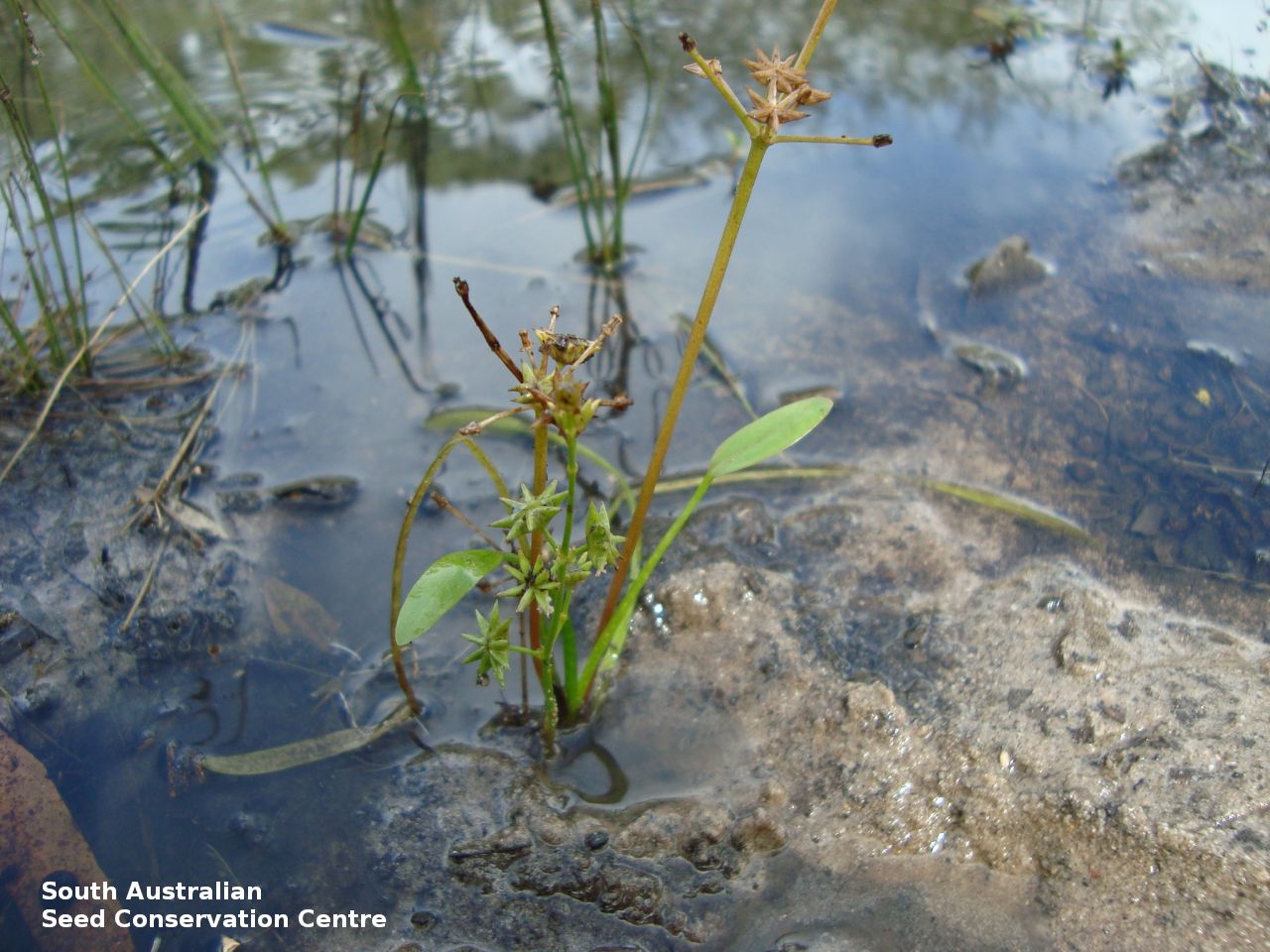
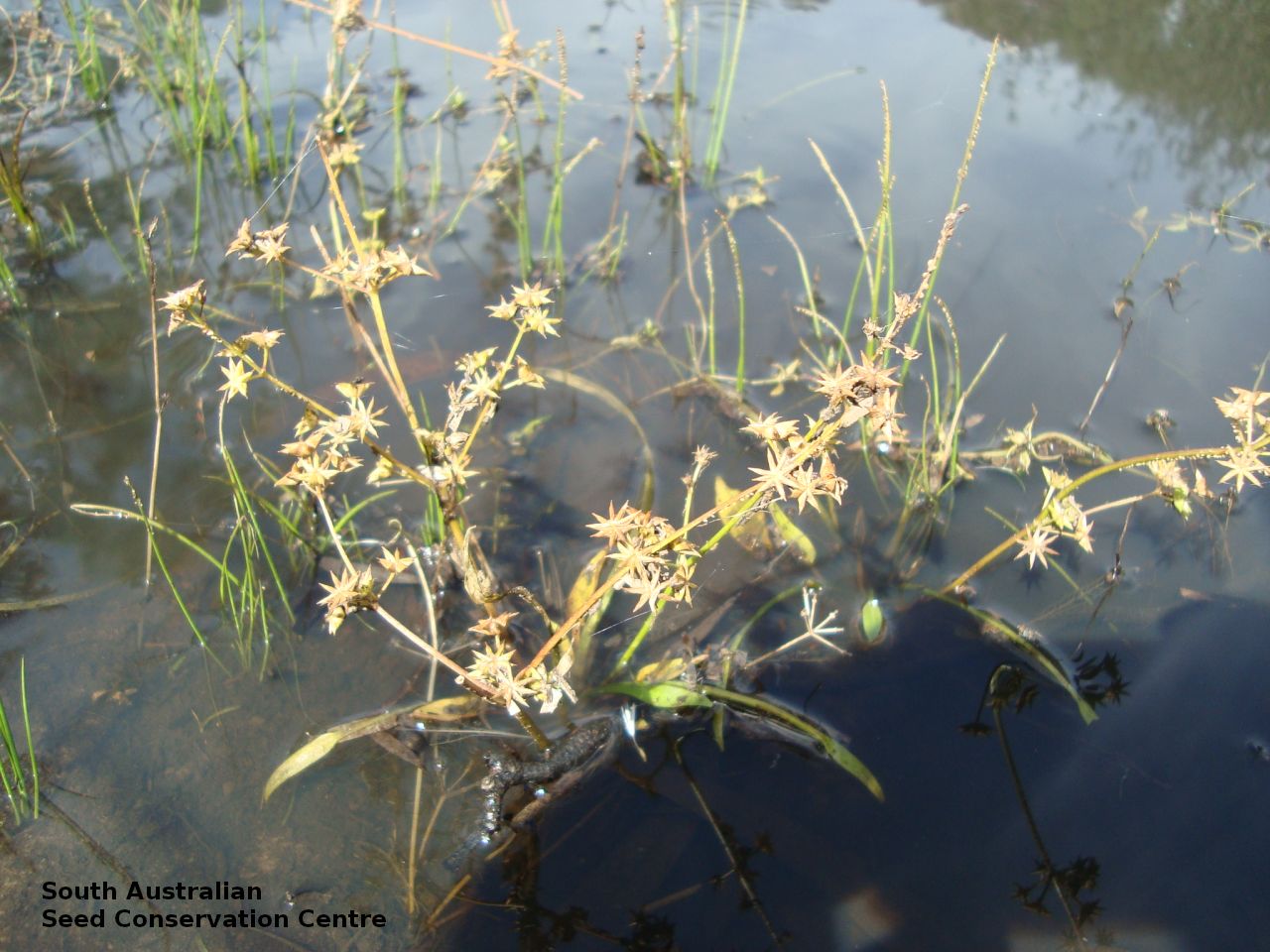
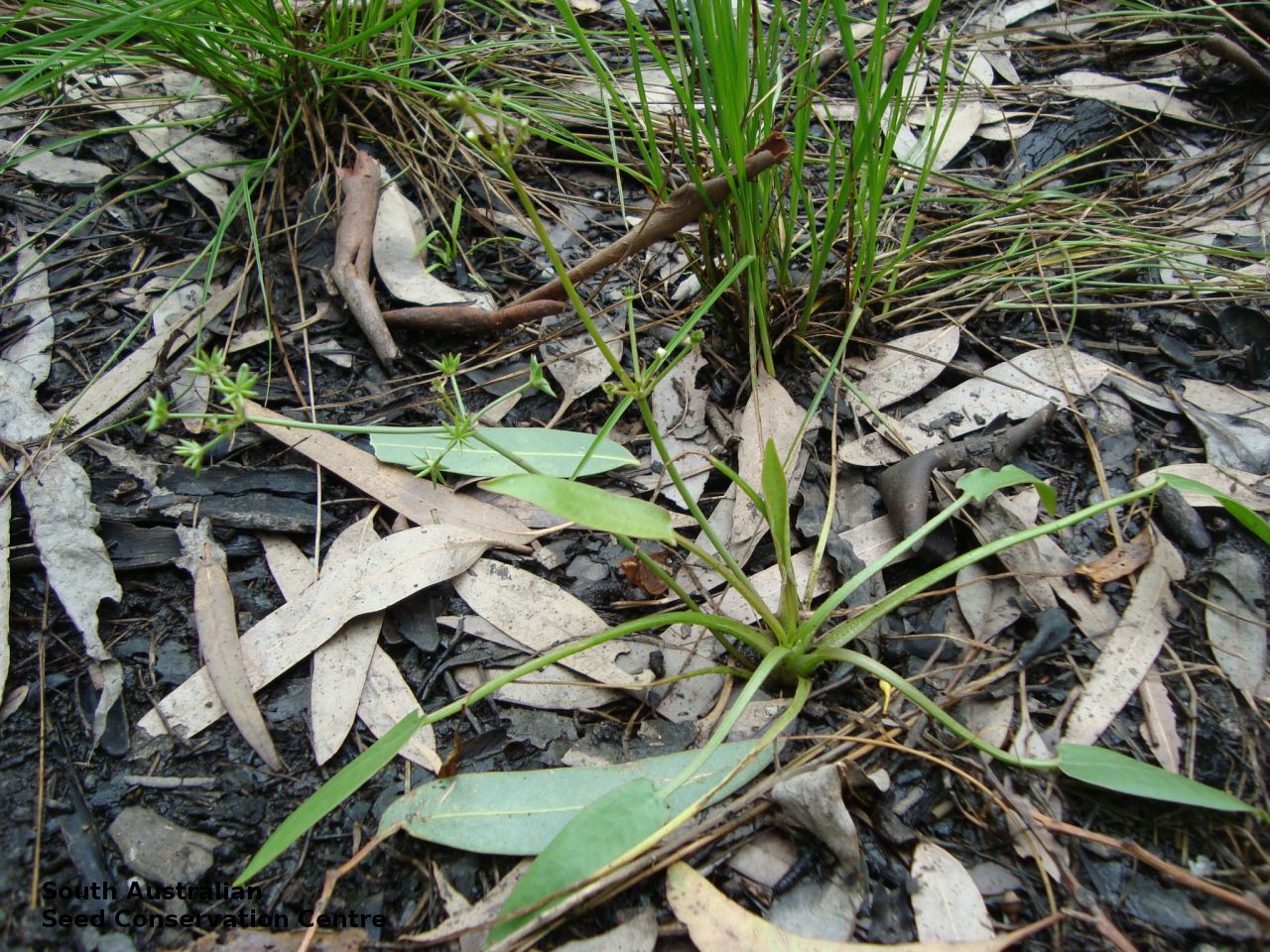
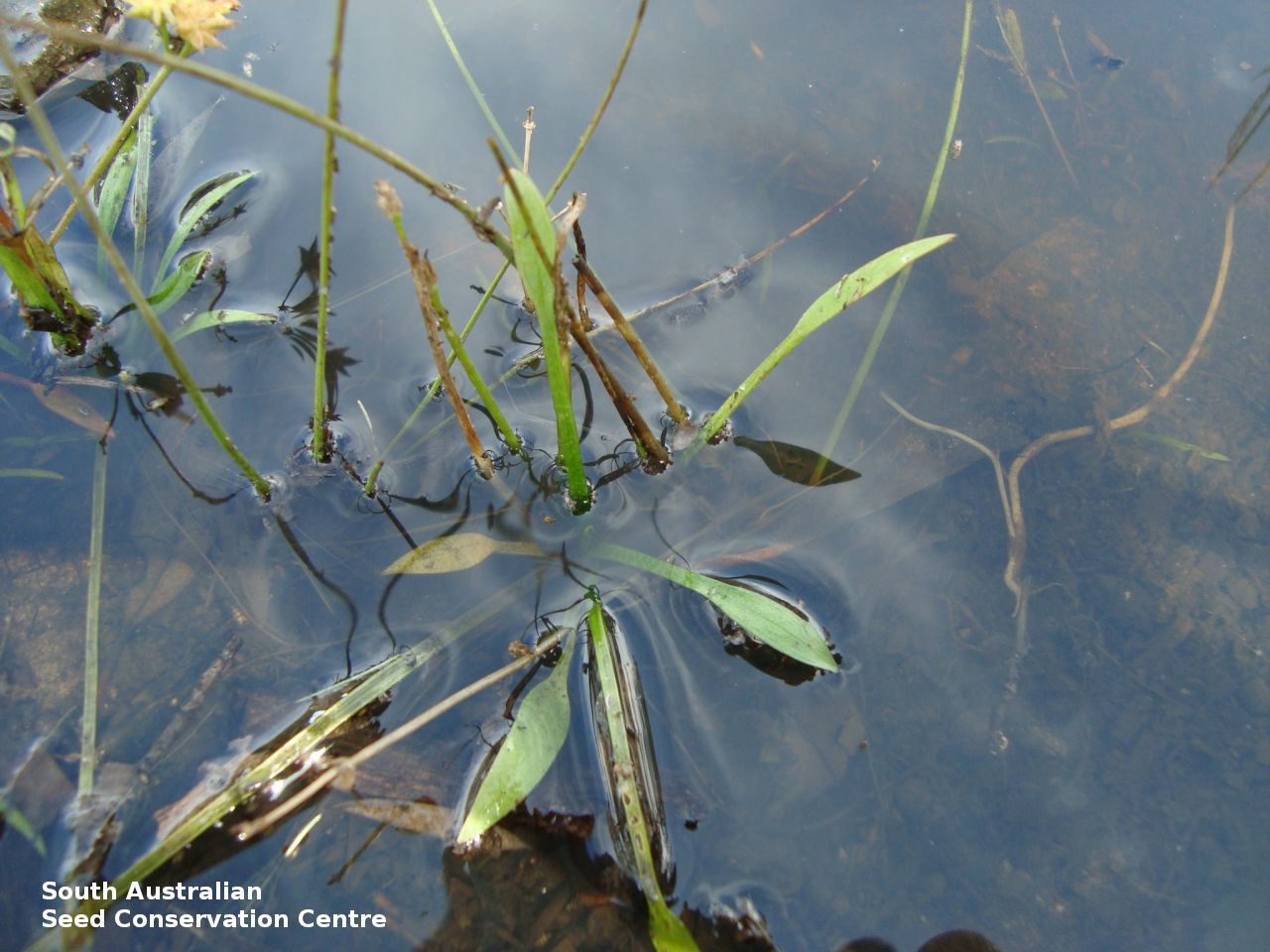
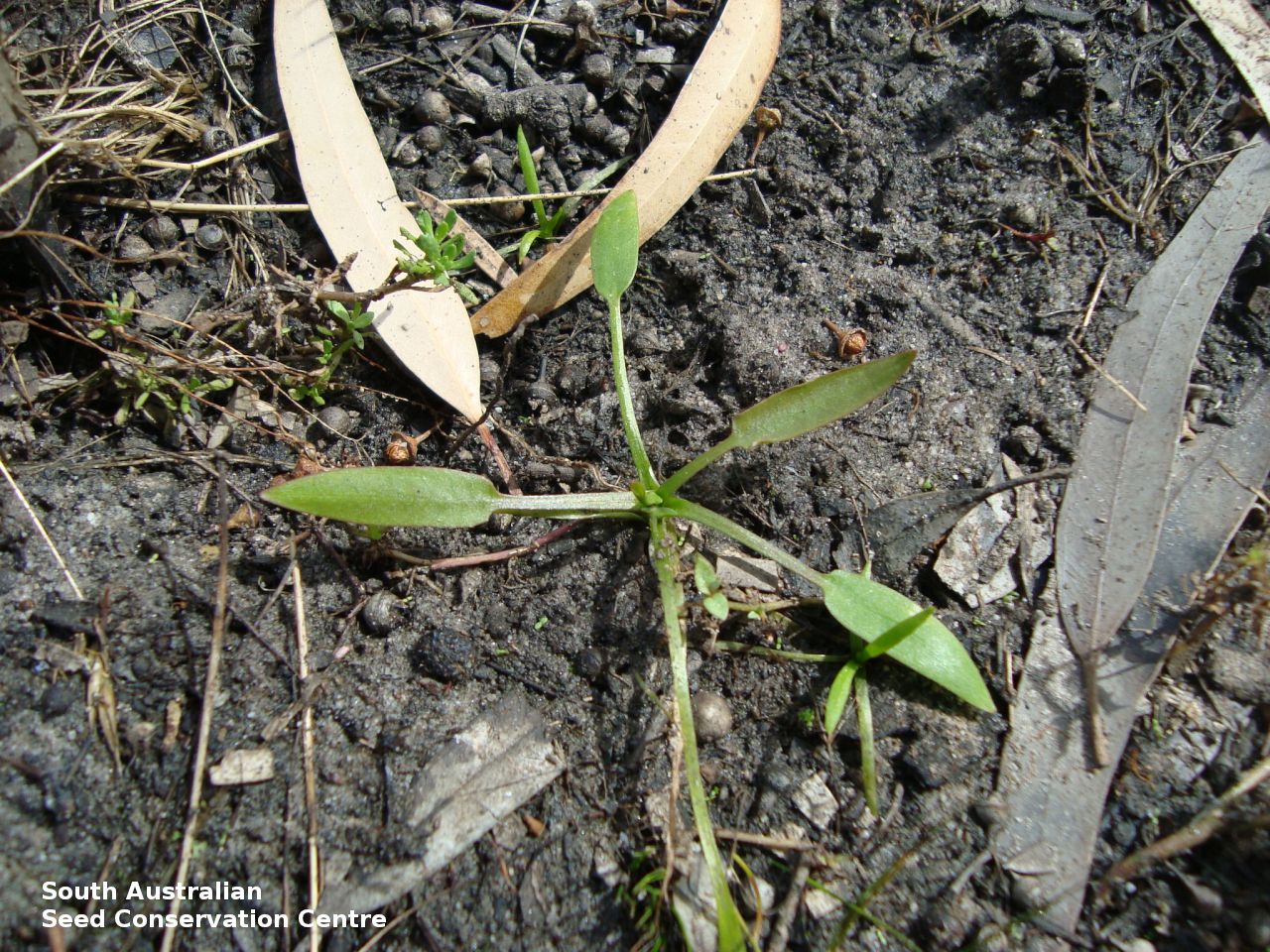
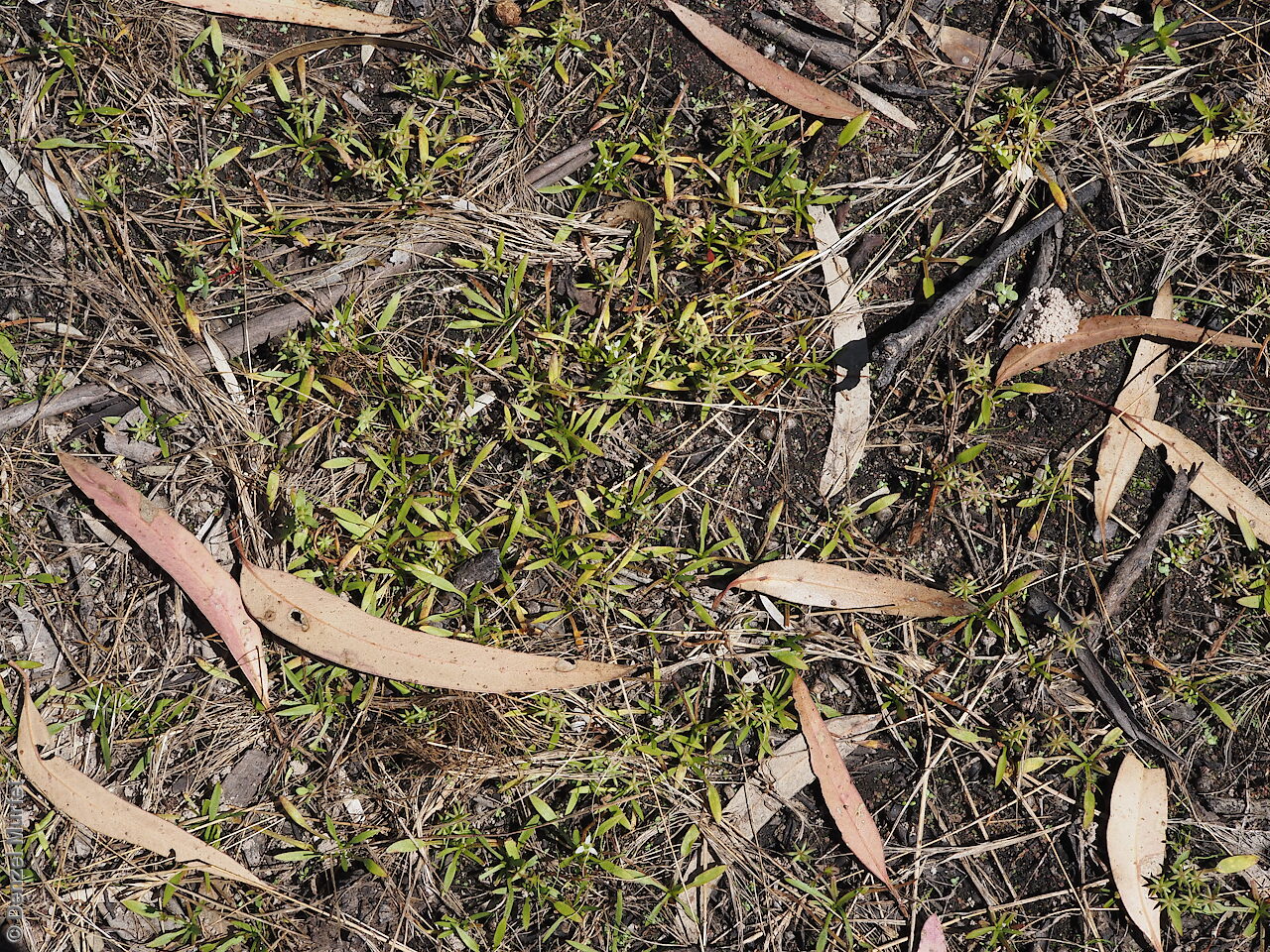
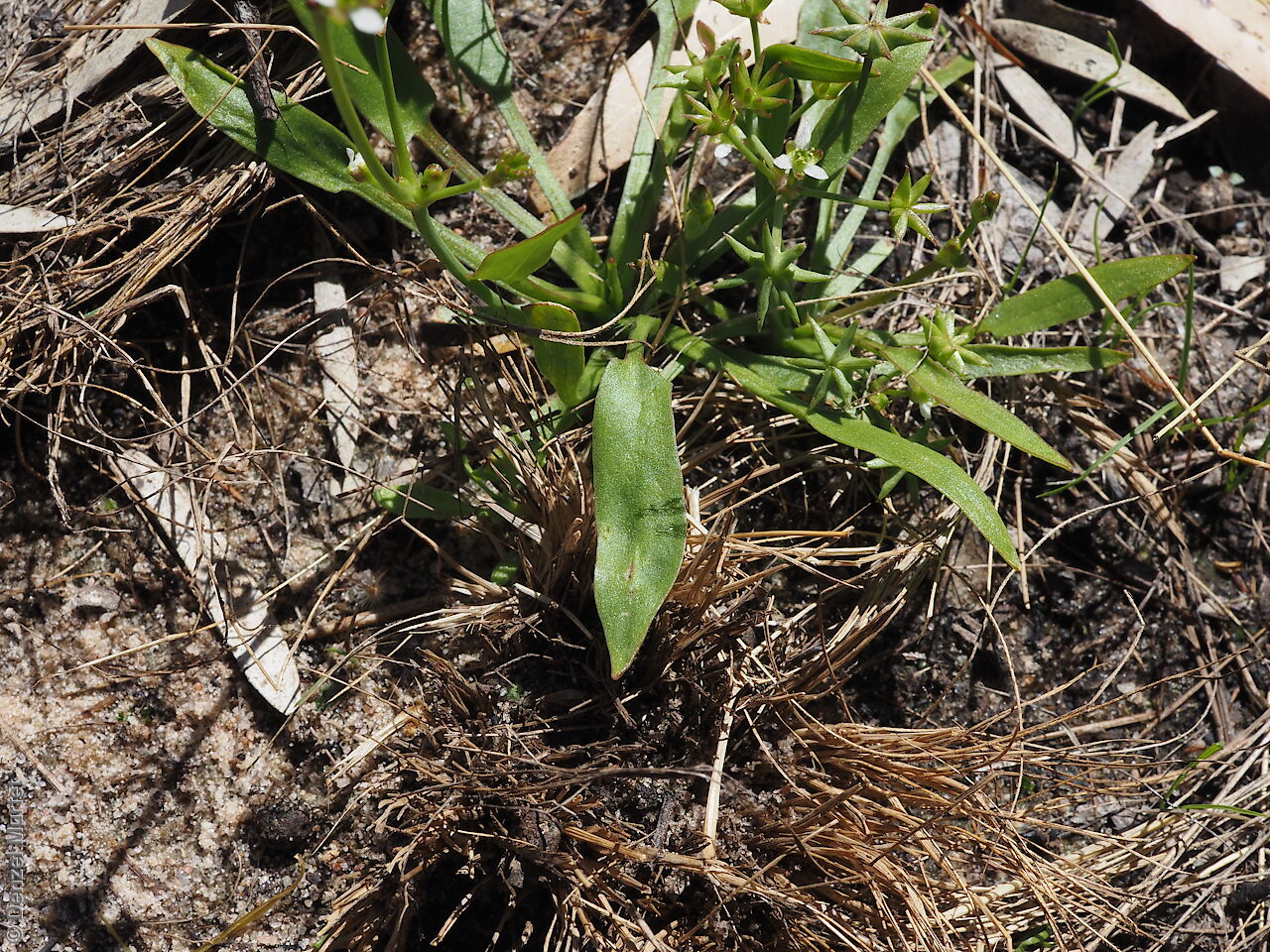
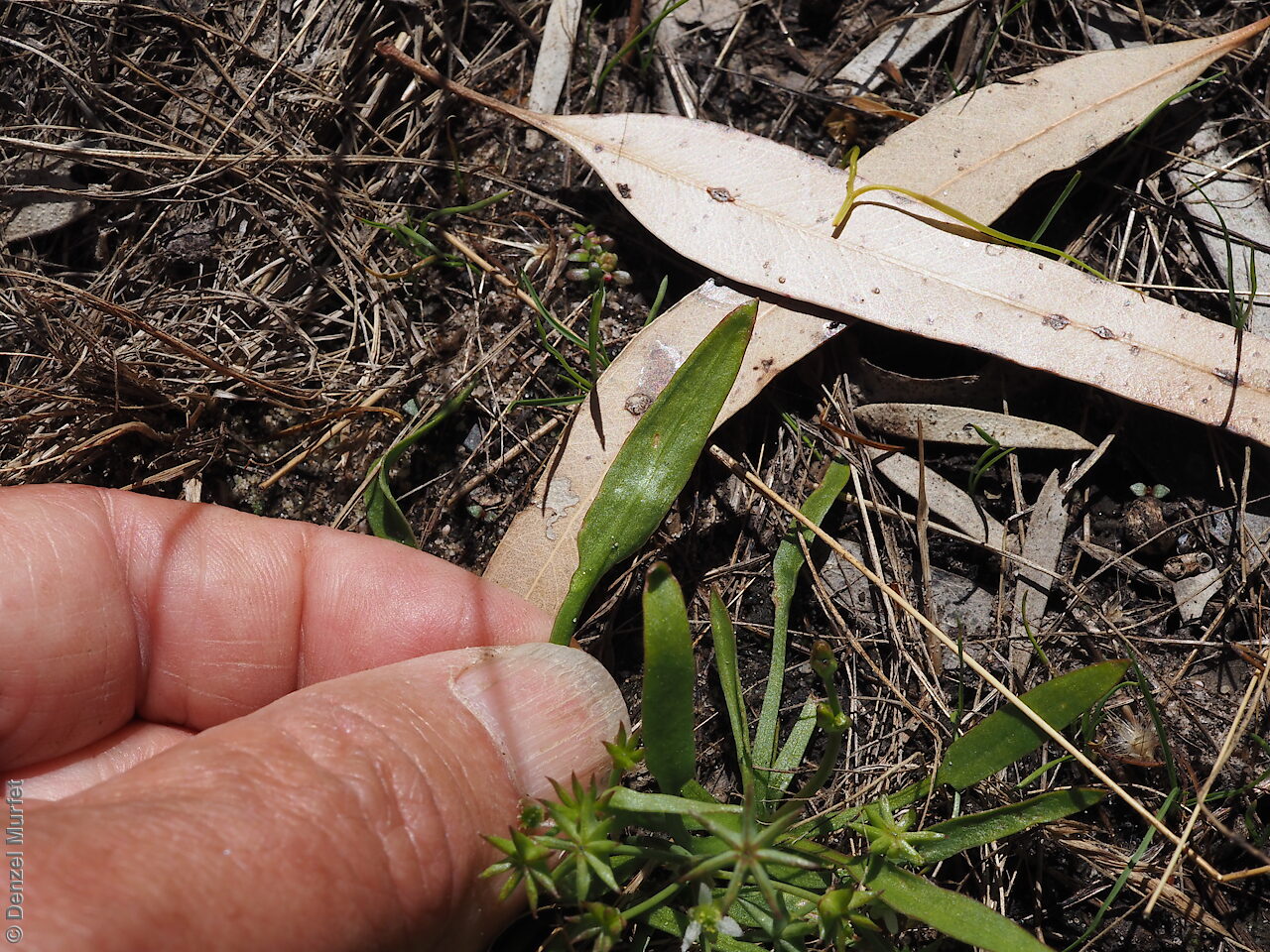
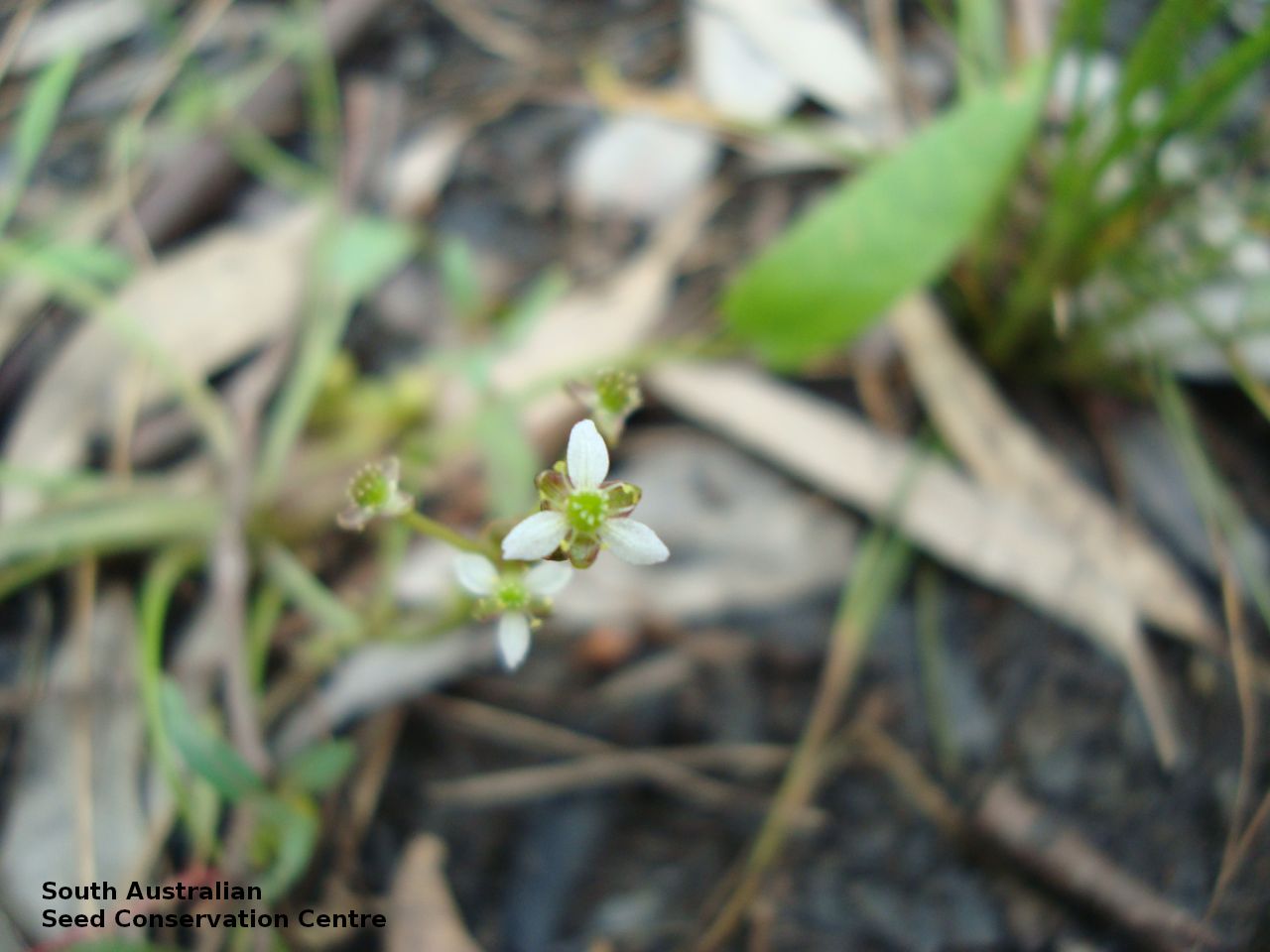
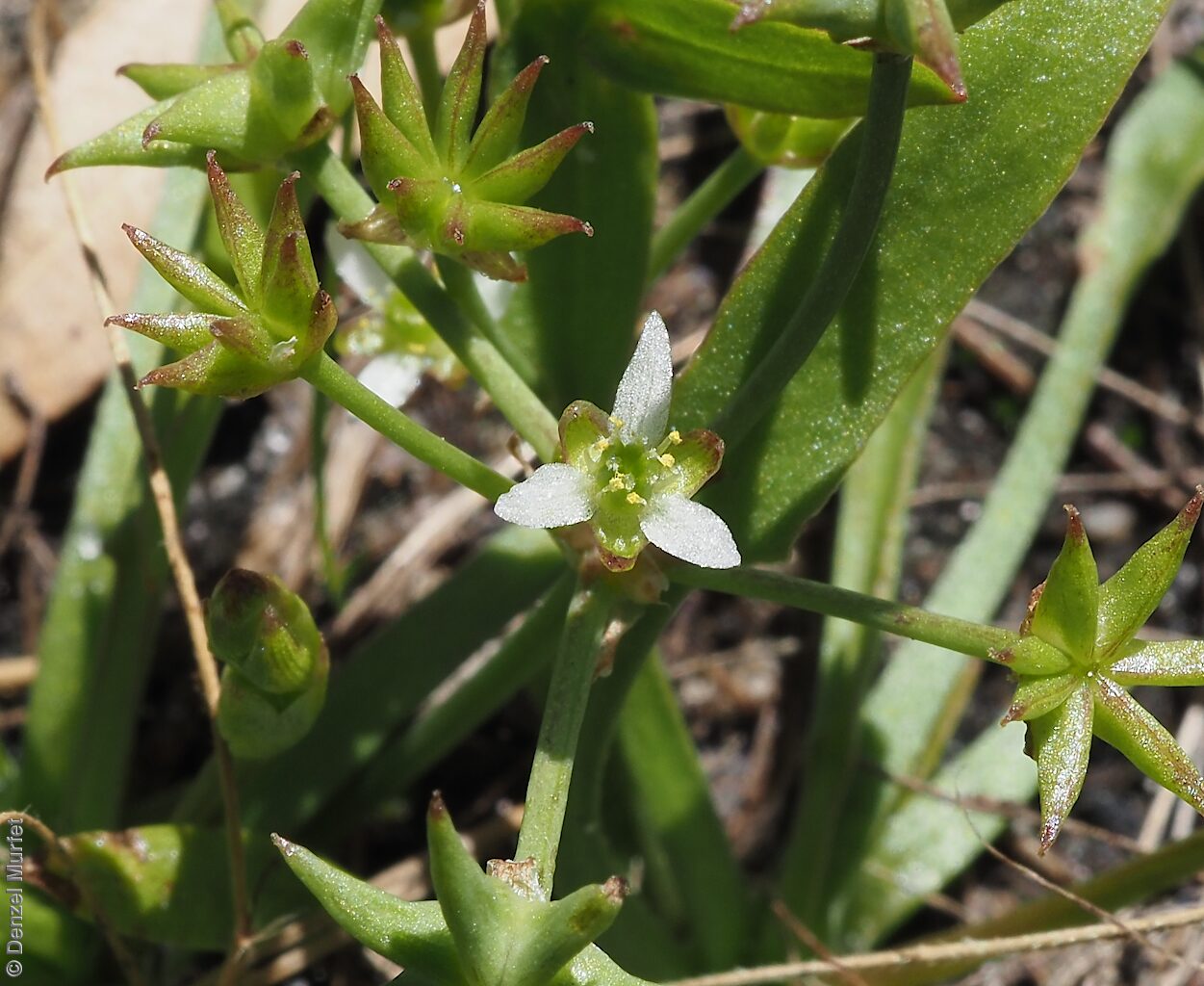
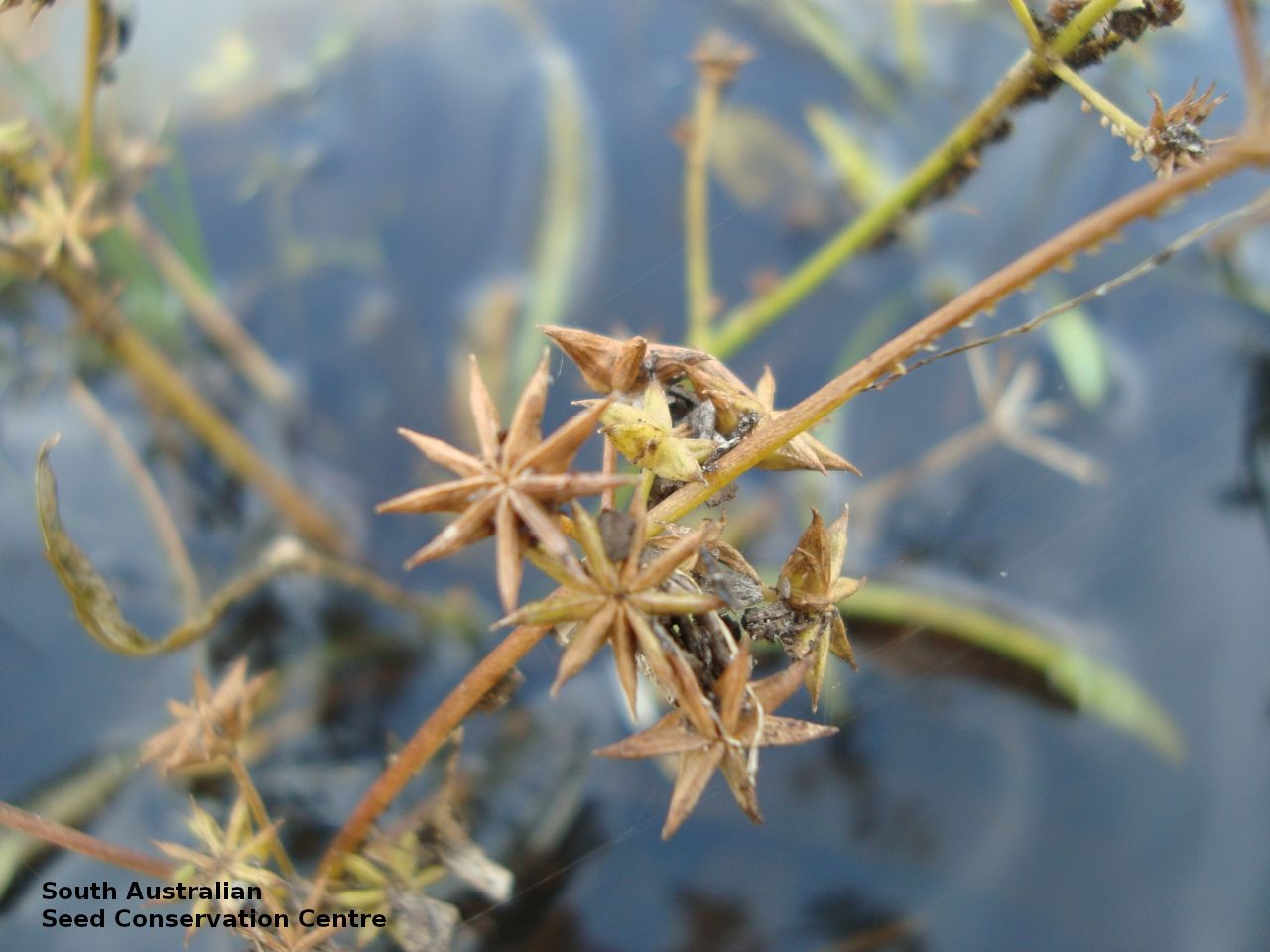
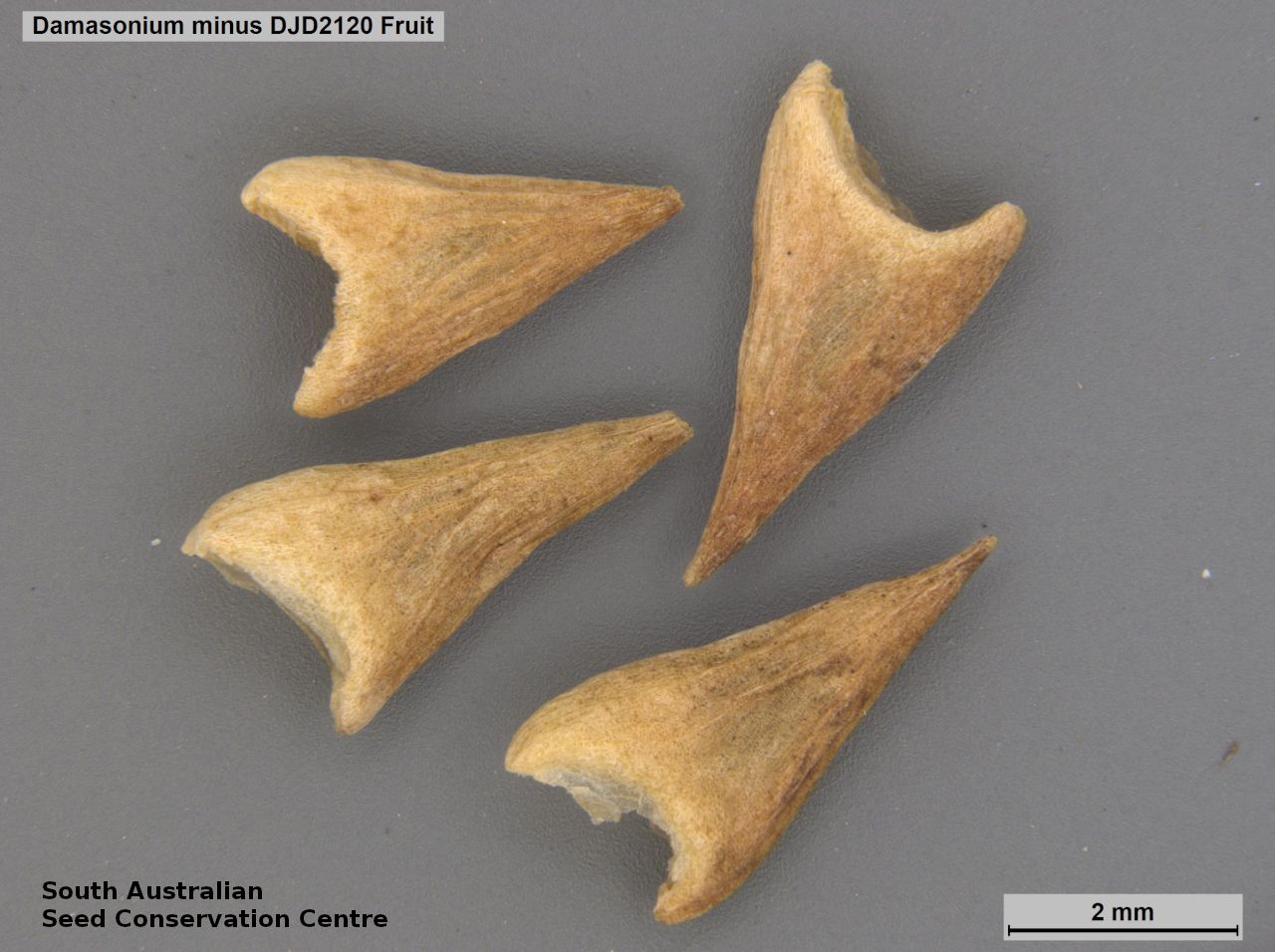
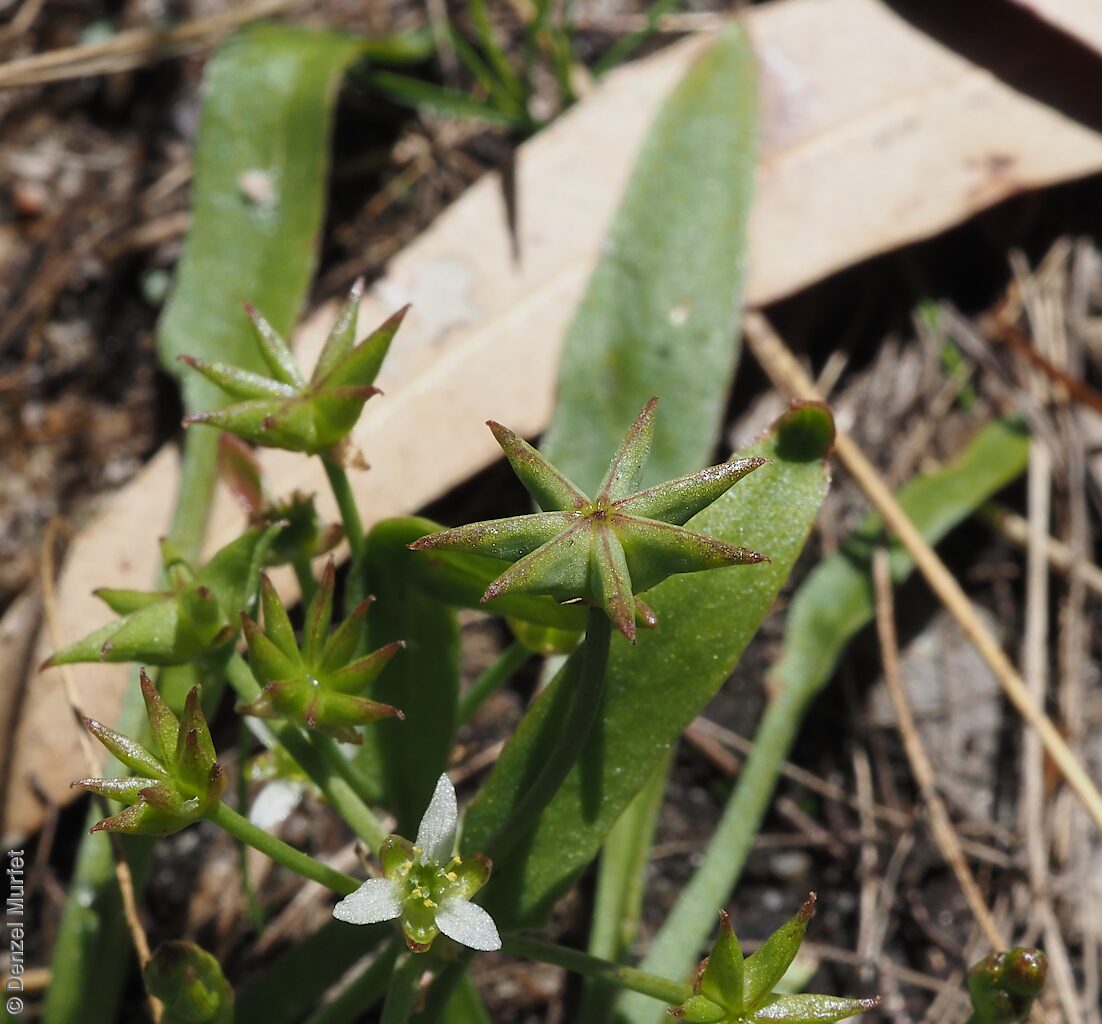
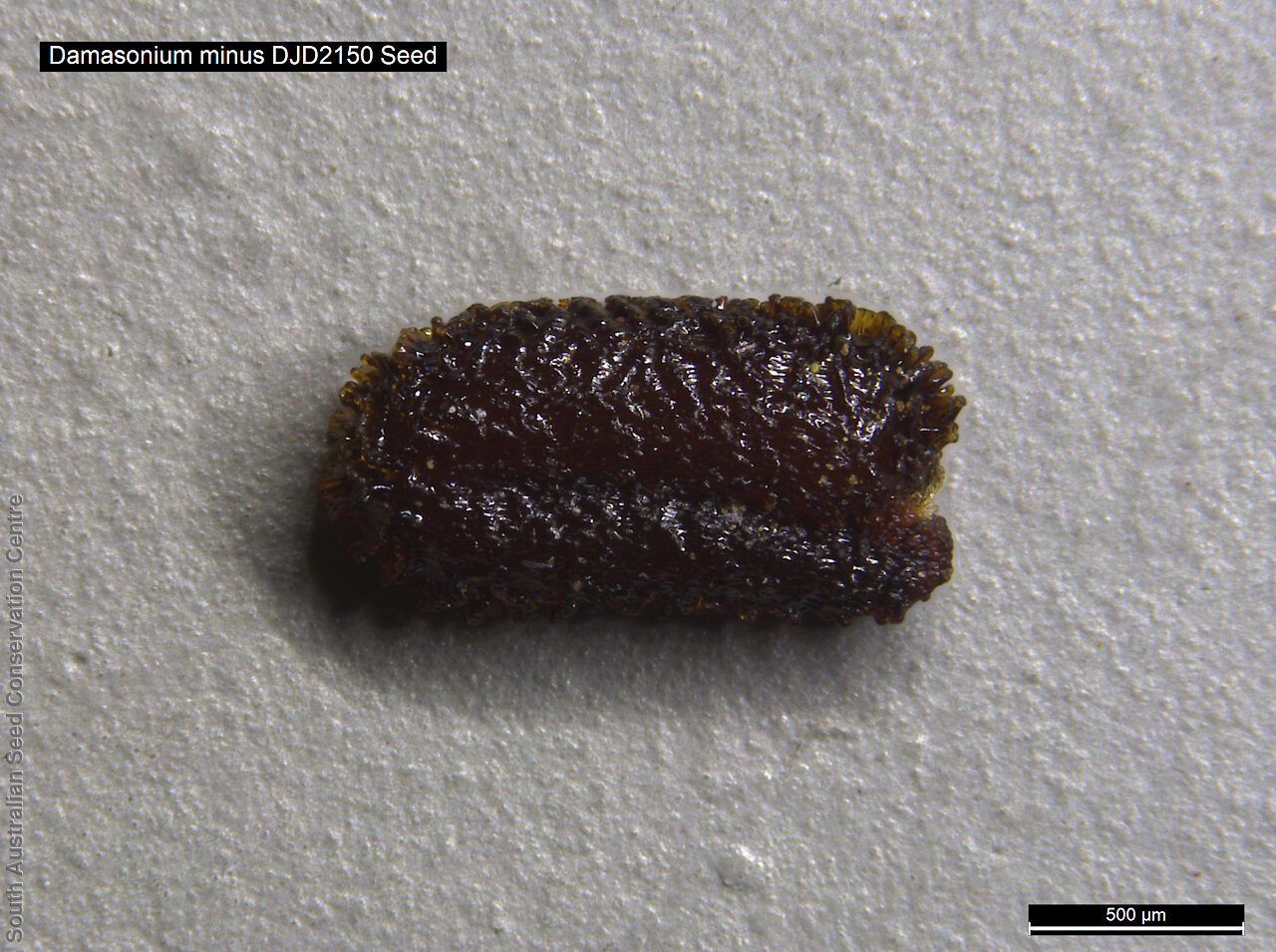
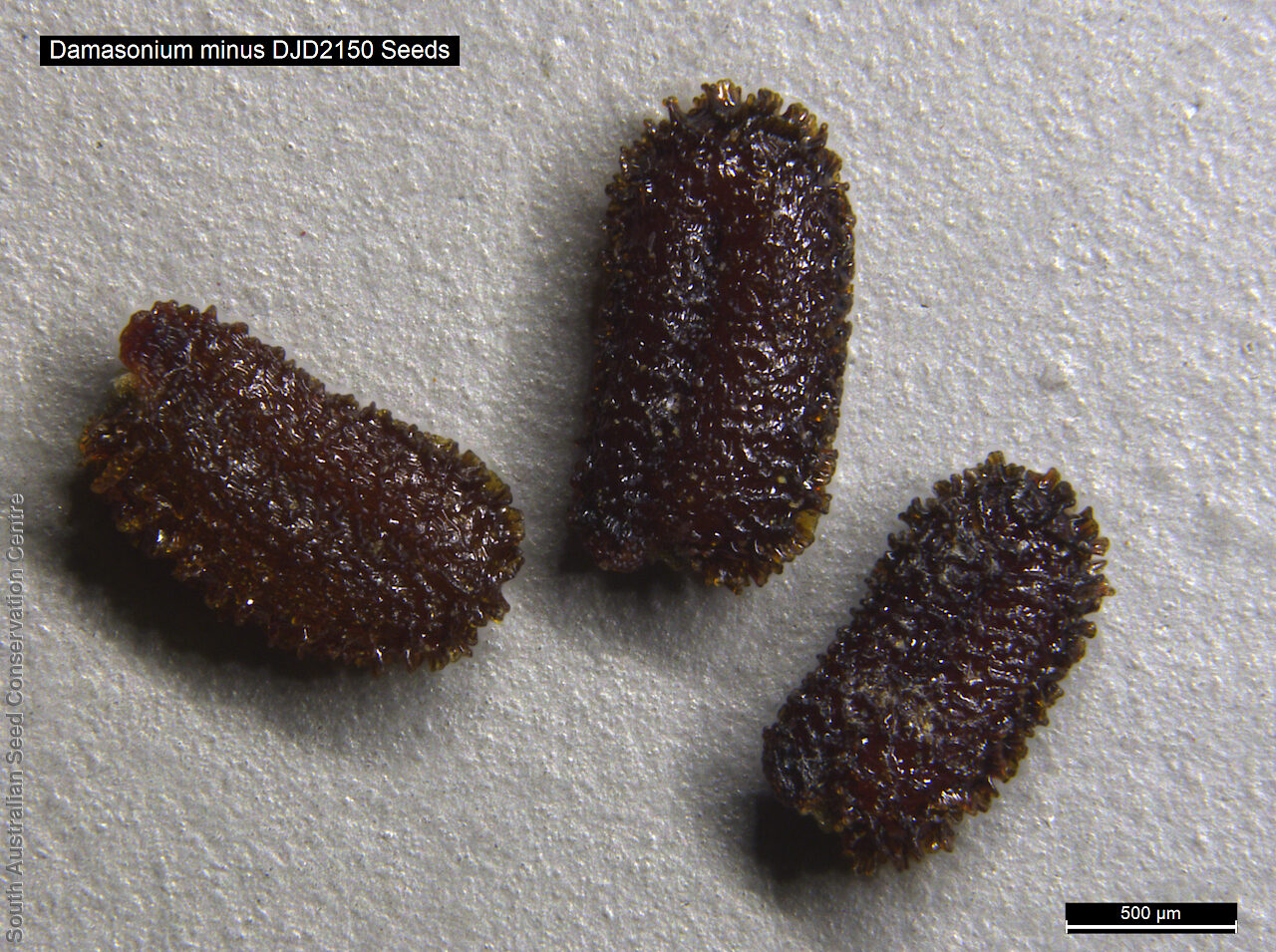
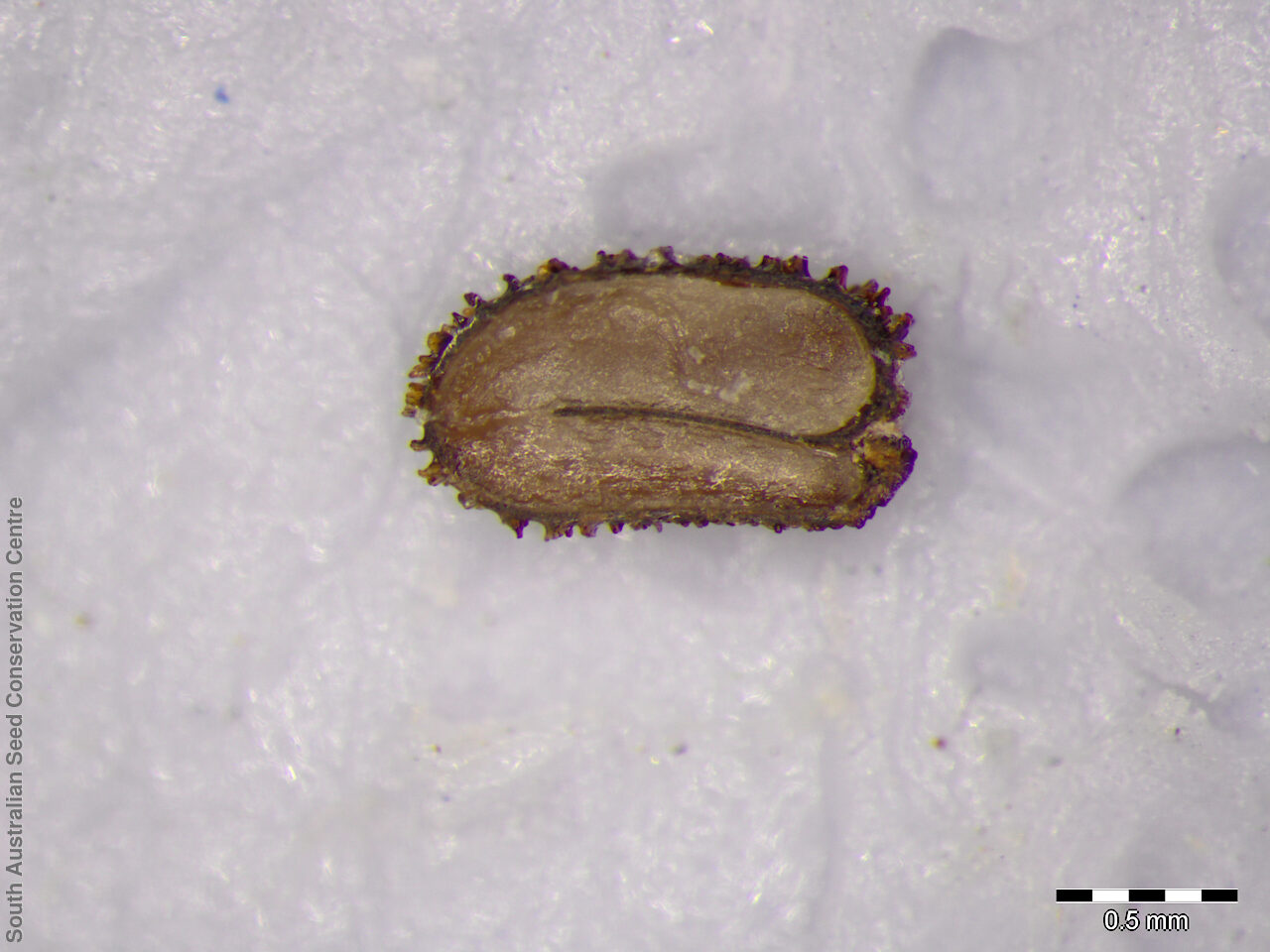
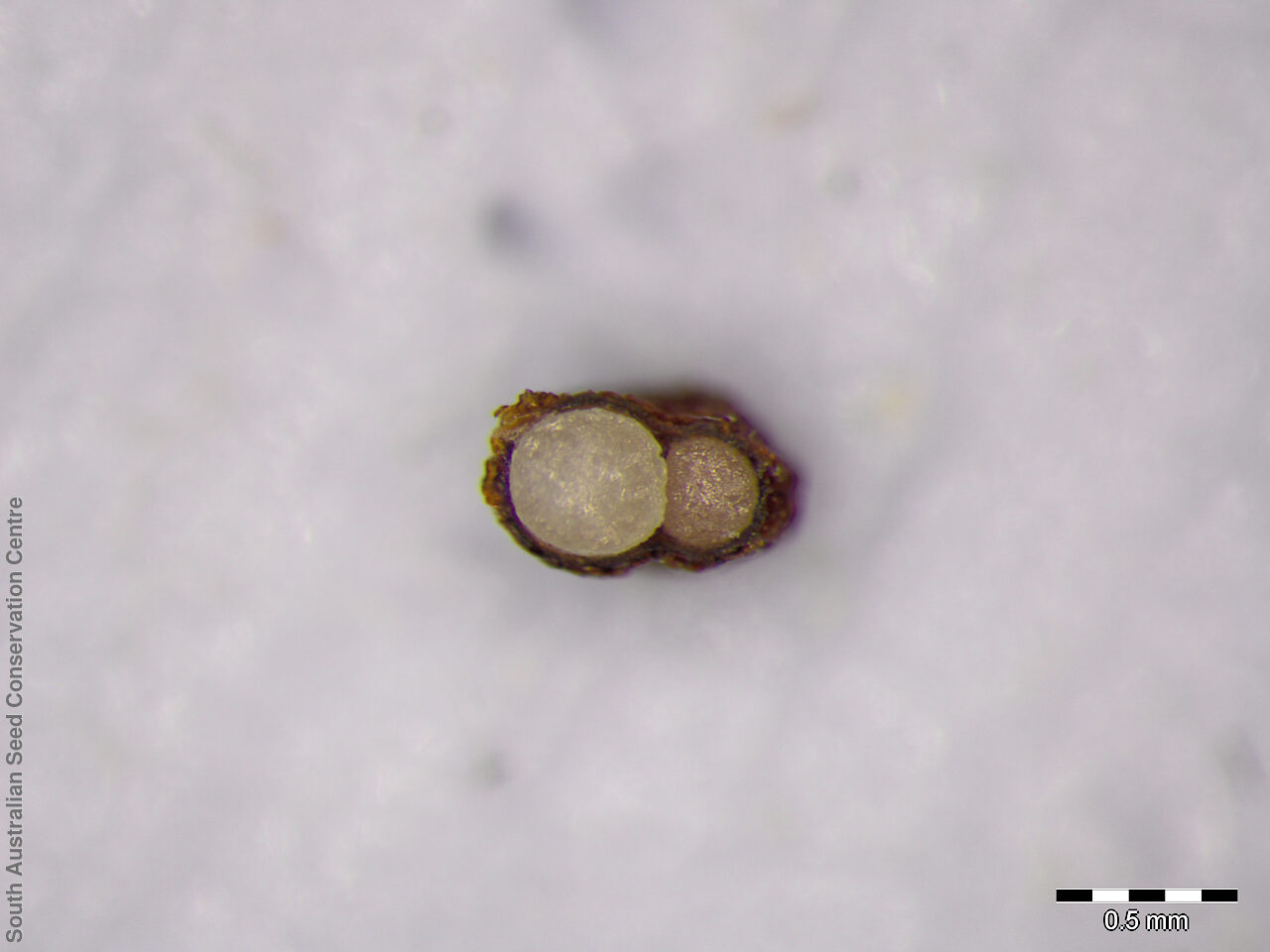
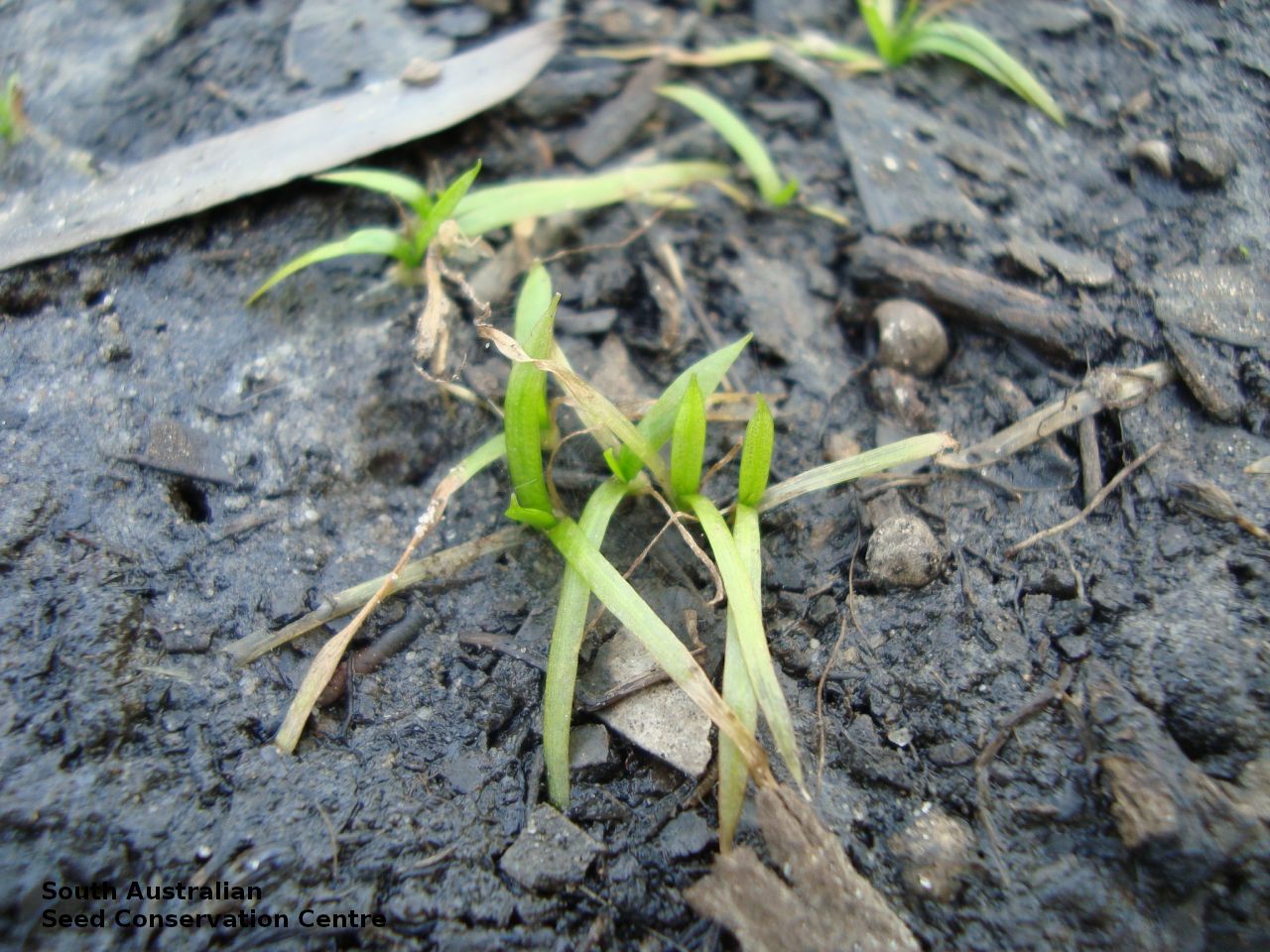
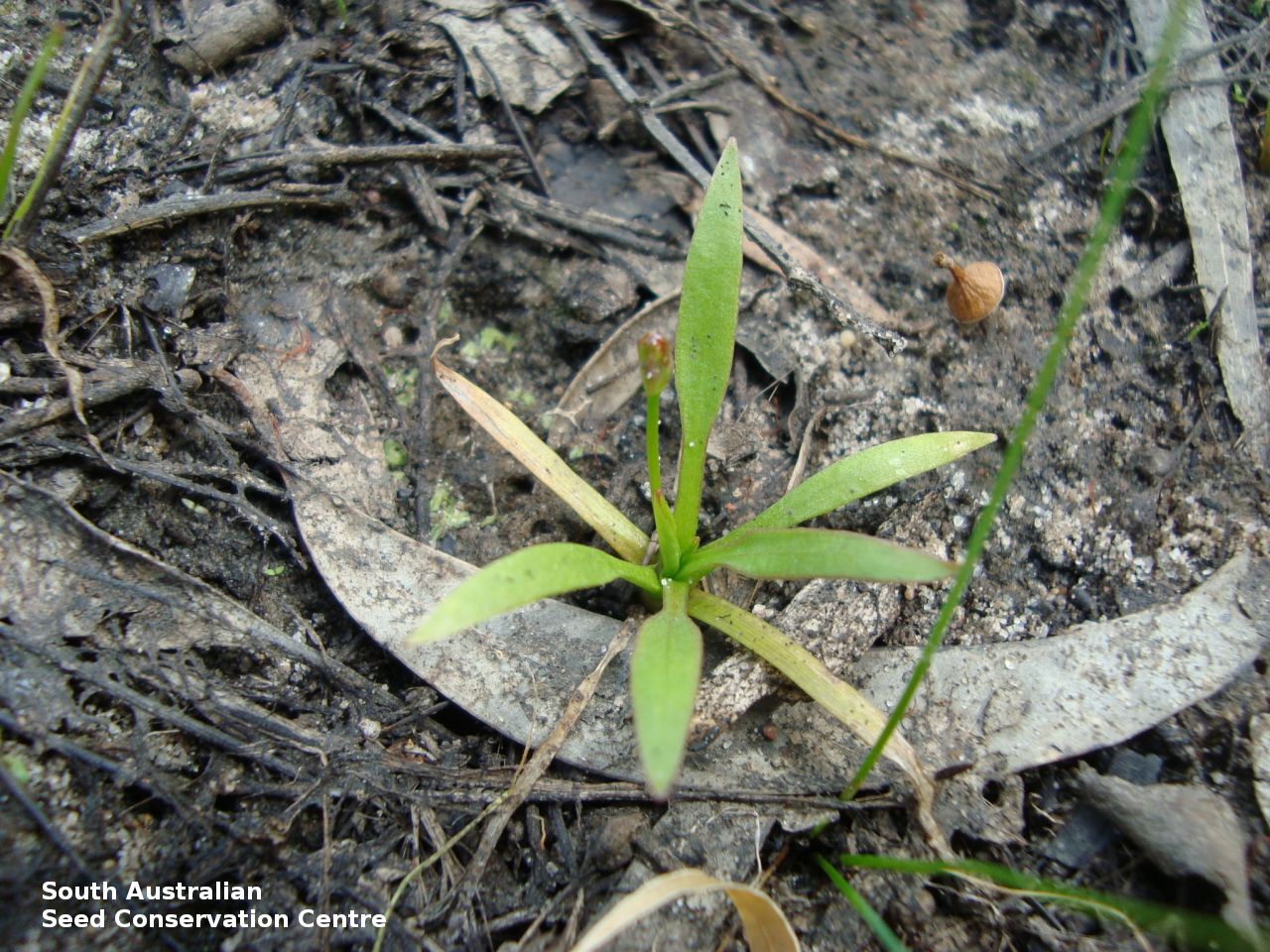

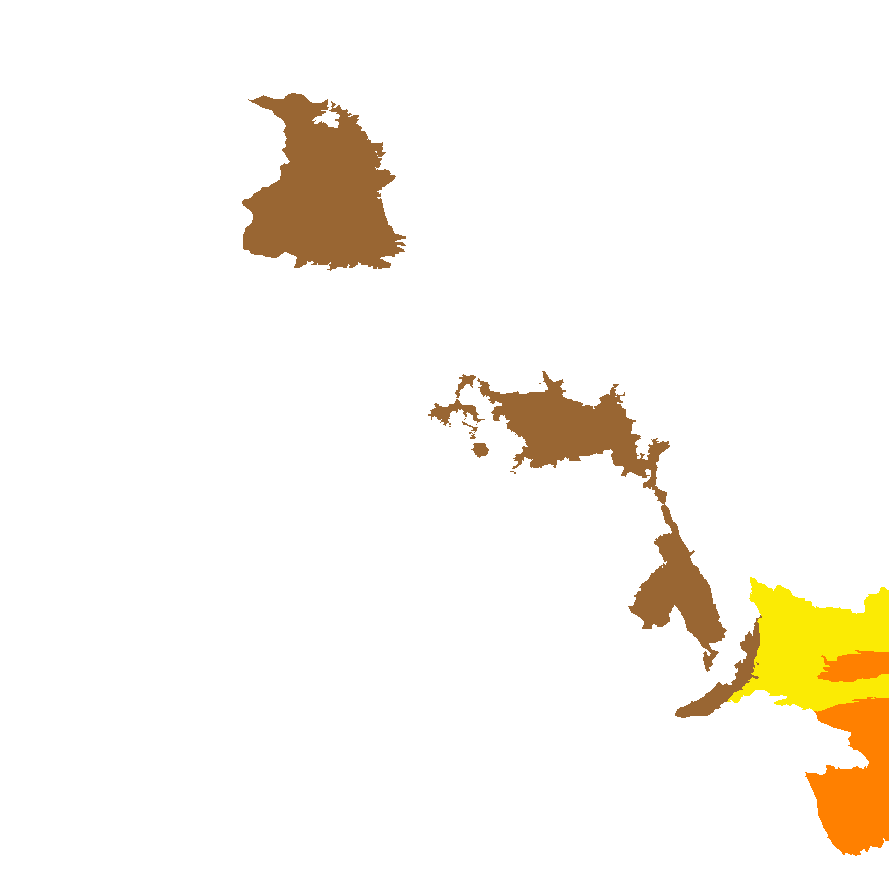
Botanical art
Prior names
Damasonium australe
Actinocarpus minor
Common names
Star-fruit
Etymology
Damasonium from the Greek 'damazo' meaning to subdue, because one species was 'said to overcome poison'. Minus meaning small, referring to the species' small flower.
Distribution and status
Found in South Australia mainly along the Murray River with scattered records from the South-east and on Eyre Peninsula growing in shallow and semi-permanent fresh water. Also found in Western Australia, Queensland, New South Wales , Victoria and Tasmania. Native. Rare in South Australia. Rare in Western Australia and Tasmania. Common in the other States.
Herbarium regions: North Western, Gairdner-Torrens, Flinders Ranges, Murray, Southern Lofty, South Eastern
AVH map: SA distribution map (external link)
Plant description
Erect, emergent annual or short-lived perennial to 1 m high with floating and/or emergent leaves, lanceolate to ovate, obtuse to cordate at the base, to 10 cm long. Flower-spike a panicle to 50 cm high with white to pale-pink flowers, with 3 petals to 6 mm in diameter. Flowering between October and February. Fruits are pale brown flat capsule to 6 mm long, forming a star-shaped aggregate fruit to 12 mm diameter. Seeds are dark brown seed to 1.3 mm long and 0.8 mm wide, with a deeply wrinkled surface. Seed embryo type is bent.
Seed collection and propagation
Collect seeds between December and April. Collect the star-shaped fruits that are maturing, turning brown and contain hard brown seeds. Place the fruits in a tray and leave to dry for 1 to 2 weeks. Then rub the dried fruits gently with your hands or a rubber bung to dislodge the seeds. Use a sieve to separate any unwanted material. Store the seeds with a desiccant such as dried silica beads or dry rice, in an air tight container in a cool and dry place From two colections, the seed viability was high, ranging from 85% to 100%.
| Location | No. of seeds (weight grams) | Number of plants | Date collected | Collection number Collection location | Date stored | % Viability | Storage temperature |
|---|---|---|---|---|---|---|---|
| BGA | 11,600 (3.73 g) | 200+ | 5-Apr-2011 | DJD2150 South Eastern | 1-Jan-2012 | 100% | -18°C |
| BGA | 4,900 (1.32 g) | 30+ | 9-Feb-2011 | DJD2120 South Eastern | 1-Jan-2012 | 85% | -18°C |
| BGA | 15,750 (5.04 g) | 50+ | 19-Oct-2011 | DJD2288 Murray | 1-Nov-2012 | 100% | -18°C |
Number of plants: This is the number of plants from which the seeds were collected.
Collection location: The Herbarium of South Australia's region name.
% Viability: Percentage of filled healthy seeds determined by a cut test or x-ray.